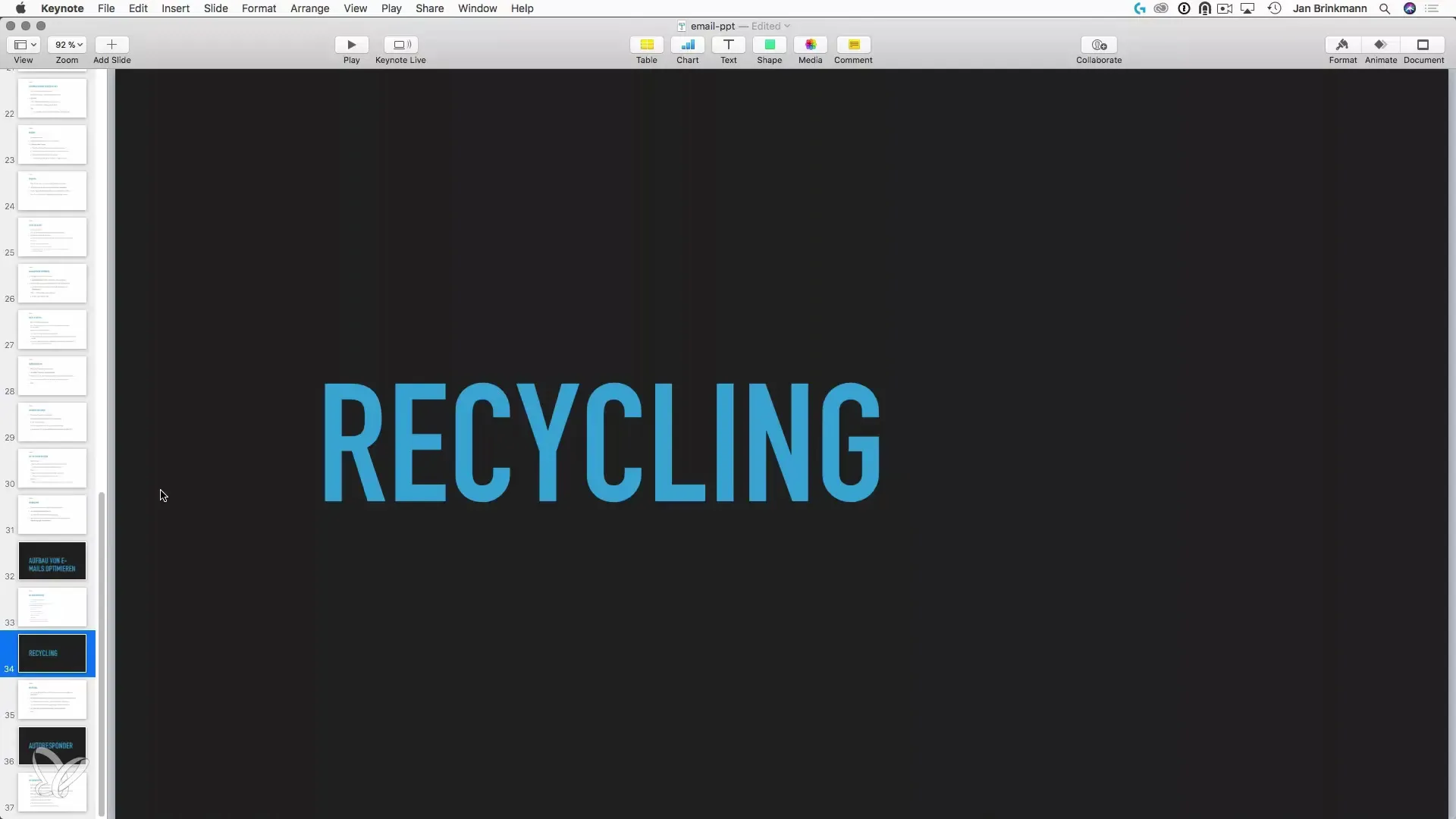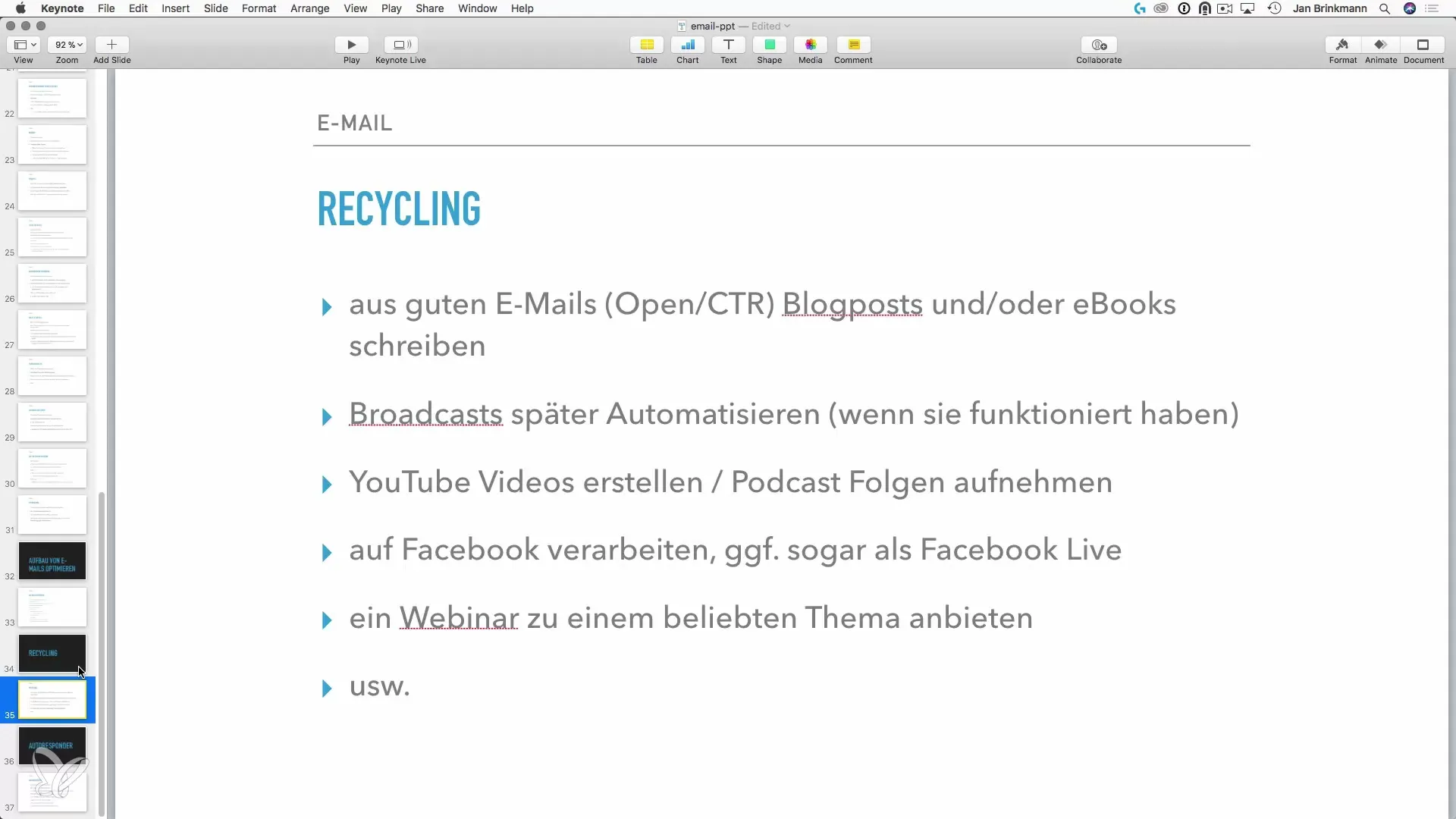The possibilities offered to you by E-mail are numerous. Often, the significance of emails as a simple communication tool is underestimated. In fact, well-thought-out emails represent a valuable treasure from which new material for various contents can be derived. If you want to unlock the full potential of your emails, you are in the right place. This guide will show you how to work with already successful email content to get even more out of your marketing.
Key Findings
- Emails are more than just communication tools; they are valuable resources for content strategies.
- Measuring success is crucial: Identify the emails that performed well and build on their content.
- Email recycling occurs through various formats, including blog posts, videos, or webinars.
- Gathering feedback and involving the target audience can open new opportunities.
Step-by-Step Guide
Step 1: Measuring Email Success
Before you start, you need to find out which of your emails were successful. Pay attention to open rates and click rates to determine which topics resonated with your target audience. For example, an email with a 75% open rate is a clear indicator of a successful topic. Analyze your best emails and identify the core messages and phrasing that worked well.

Step 2: Transforming Content
Now you can work with the content of your most successful emails. You don’t have to copy everything word for word; consider how you can rephrase the core ideas. For example, you could turn the successful email into a blog post and add further information. This allows you to dive deeper into the topic and provide even more value to your readers.
Step 3: Creating Multimedia Content
Consider presenting your email ideas in other formats as well. A YouTube video can be an excellent addition to your original email content. For instance, if you're writing about the topic "Learn Programming Faster," you could create short videos that delve deeper into specific aspects. This approach addresses different types of users and uses the original email as a springboard.

Step 4: Utilizing Social Media
Utilize platforms like Facebook to reach your audience. Post a summary of your email content or go live to receive direct feedback from your community. Such interactions increase the visibility of your content and can provide valuable insights for further topics.
Step 5: Webinars and Podcasts
If you plan a webinar, draw from your successful email content as a foundation. This strategy allows you to provide deeper insights and answer questions in real time. Alternatively, you could also start a podcast to cover the topics that interest your email readers the most. This fosters a closer connection with your target audience.
Step 6: Gathering Feedback from the Community
Once you have published some content, it is important to gather feedback from your readers and listeners. Actively ask for opinions and suggestions, either through surveys or simple follow-up questions in your posts. This way, you can directly learn which content resonates well and where there is still room for improvement.
Step 7: Data Analysis for Future Content
The data collected from your emails, blog posts, and social media content are valuable indicators of where your audience's interests lie. For example, if you see that a particular topic is repeatedly clicked, you can assume that further material in this direction is in demand. Use this information to continuously optimize your content strategy.
Summary - Email Recycling: Strategies for Reuse
The recycling of email content can be a cost-effective way to maximize your content. By analyzing successful emails and transforming this content into various formats, you not only create added value for your target audience but also expand your reach. You can develop a multi-faceted content strategy that includes both informative and interactive elements with simple means.
Frequently Asked Questions
What are the first steps for recycling emails?First, analyze the open and click rates of your most successful emails.
How can I transform email content into other formats?Turn the core ideas into blog posts, videos, or podcasts to reach a broader audience.
What is the advantage of webinars and livestreams?They offer the opportunity to directly interact with your target audience and receive valuable feedback.
How can I gather feedback from my target audience?Use surveys, direct questions on social media, or inquiries within your content.
How does data analysis influence my content strategy?By analyzing engagement data, you can better understand which topics and formats resonate with your audience.


